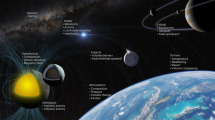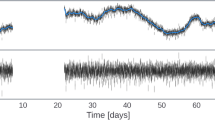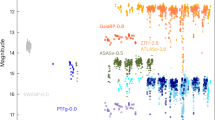Abstract
THIS beautiful planet being now very favourably situated for examination, it may interest many of your astronomical readers if I give a brief description of the markings which have recently been seen on her surface. That these markings are exceedingly difficult objects to detect, even with a powerful telescope and under favourable atmospheric conditions, there is no doubt, and many observers have consequently failed to see them. The late Rev. W. R. Dawes, although possessed of very excellent vision, could never make them out, and it seems that the fact of their existence is doubted at the present time by some observers. At the meeting of the Royal Astronomical Society on November 10 last, “the Astronomer Royal mentioned that Venus was very favourably situated for observation, especially for noticing spots if any existed on her surface, his own experience being that there were no certain markings thereon, which the President corroborated.” The opinions of such eminent astronomers should always be carefully considered, and the matter in dispute thoroughly investigated, before a contrary opinion is entertained. In the present case, however, I think that there is a sufficiency of evidence to prove that markings of various forms exist on the surface of the planet. I am the more particularly induced to say this by having before me upwards of sixty sketches of their appearance, made by experienced observers, who in the making of observations employ telescopes of great power and excellent definition. No doubt the faint cloudlike markings can only be made out after attentive gazing, and then are scarcely visible, though they have been distinctly seen by many observers. It is difficult to account for the fact that Mr. Dawes could not distinguish them, but perhaps the reason may be apparent, if we consider that an observer who is the most successful in the observation of faint companions to double stars, cannot satisfactorily observe the faint markings with which the planet's disc is diversified. Many observations of the spots were made at Rome in 1839—1841, and of six observers those were the most successful who experienced the greatest difficulty in detecting minute companions to large stars.*
This is a preview of subscription content, access via your institution
Access options
Subscribe to this journal
Receive 51 print issues and online access
$199.00 per year
only $3.90 per issue
Buy this article
- Purchase on SpringerLink
- Instant access to full article PDF
Prices may be subject to local taxes which are calculated during checkout
Similar content being viewed by others
Author information
Authors and Affiliations
Rights and permissions
About this article
Cite this article
DENNING, W. The Planet Venus. Nature 5, 100 (1871). https://doi.org/10.1038/005100b0
Published:
Issue date:
DOI: https://doi.org/10.1038/005100b0



